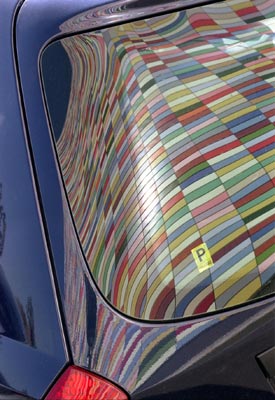Reconstructing Harry Weese
At his peak in the sixties and seventies, Harry Weese was arguably Chicago’s preeminent architect, a visionary whose ideas helped revive the city’s fraying downtown and whose projects won worldwide acclaim. But his final years were marked by a sad, booze-saturated decline, and in time his reputation faded. Now a forthcoming examination of his architecture could restore him to the place of honor he deserves.
By Robert Sharoff
(Excerpted from "Reconstructing Harry Weese" in the July 2010 issue of Chicago Magazine)


Two years before her father, the visionary architect Harry Weese, died in 1998, Marcia Weese made a last lonely trip to visit him. After a spectacular alcohol-fueled crackup in the 1980s, Harry Weese had been committed to a dreary downstate veterans’ hospital, where he spent his final years drifting in and out of consciousness. “It was fall,” Marcia recalls, “and I found this gigantic sycamore leaf—probably 15 inches across. My dad loved trees, so I brought it down with me.” Her father by then had become a spectral figure, confined to bed and increasingly unresponsive after a series of strokes. “I know he recognized me,” she says, “but he didn’t—probably couldn’t—speak. So I laid the leaf on his chest.”
It was an oddly peaceful ending to a relationship that had both nurtured and wounded her over the years. No encounter with Harry Weese was without drama, and the closer you were to the bonfire of his outsize personality, the more likely you were to be singed.
Throughout his long life, Weese’s obsession never varied. As his wife, Kitty, recalled, “It was architecture all the way.” He often seemed close to flying off the tracks, both emotionally and intellectually, and eventually he did. But before that happened, Harry Weese had one of the wildest rides in the history of Chicago architecture. Over the course of his career, he designed almost a thousand buildings. These range from single-family houses, churches, schools, and small-town community buildings to Washington, D.C.’s enormous—and mind-boggling—Metro public transportation system, which opened in 1976. In his obituary of Weese, the New York Times architecture critic Herbert Muschamp ranked the Metro as “among the greatest public works projects of [the 20th] century.” The vaulted spaces where stations intersect, Muschamp wrote, “induce an almost religious sense of awe.”
In Chicago, Weese’s many commissions include the Time & Life Building, the Latin School, and the Metropolitan Correctional Center, as well as such groundbreaking restoration projects as the Auditorium Theatre, the Field Museum, and Orchestra Hall.
At his peak in the 1960s and 1970s, Weese represented Chicago’s most sustained and successful alternative to what was then the overwhelming dominance of Mies van der Rohe and the International style. “When I joined Harry’s office [in 1961], it was like giving up the Church of England and becoming a Christian Scientist,” says Jack Hartray, who had previously worked as a designer at Skidmore, Owings & Merrill, then and now the foremost proponent of Miesian modernism in the city. “Harry was a [modernist] architect who was doing very interesting buildings, but they weren’t like anyone else’s.”
Beyond specific buildings, Weese wielded influence with visionary planning schemes for transforming downtown Chicago. These ultimately included the creation of Printers Row, the city’s first loft district, as well as the redevelopment of the downtown riverfront as a residential and recreational area. “He talked more about the physical fabric of Chicago and what had to be done with it than any other architect of the period by a huge margin,” says the architectural historian Robert Bruegmann. “And this was during the very worst years—the late sixties through the early eighties—when it looked like central Chicago could go under the same way Detroit and St. Louis did. One of the reasons that didn’t happen is Harry Weese.”
Bruegmann is the author of The Architecture of Harry Weese, a new critical study that Norton will publish in September. The book is the first about a man who once commanded international attention but is now rarely mentioned. Part of this, of course, relates to the eternal tides of taste and fashion. The postwar generation of architects, of which Weese was a leading member, went severely out of style in the eighties and nineties.
But part also relates to the King Lear–like grandeur of Weese’s fall. Over the last stormy decade of his life, he went from a man at the pinnacle of his profession to a raging, disheveled figure who could often be found wandering the city’s streets. “It’s something you say wasn’t a part of Harry Weese,” says Ben Weese, an architect and Harry’s adored younger brother. “You have to separate yourself from it.”
“I don’t think he ever wanted to quit drinking,” says Shirley Weese Young, his second-oldest daughter. “He liked being badly behaved. He was a rebel.”
Story reprinted with permission of the author - Robert Sharoff

1 Comments:
Thanks to Robert Sharoff for his piece on Harry Weese
and Eyecandy for republishing it: long may Weese be reconstructed. Sometimes we need the otherworldlyness of architecture to remind us of
what can be done
Post a Comment
<< Home